Skip the grocery store, ditch the store-bought barbecue sauce, and take your BBQ game to the next level with Homemade BBQ Sauce! This recipe combines sweet brown sugar, tangy notes from vinegar and Worcestershire sauce, and the perfect balance of spices and vegetables to create a bold flavor. So, fire up the grill and get ready to impress your friends and family with your barbecue creations!
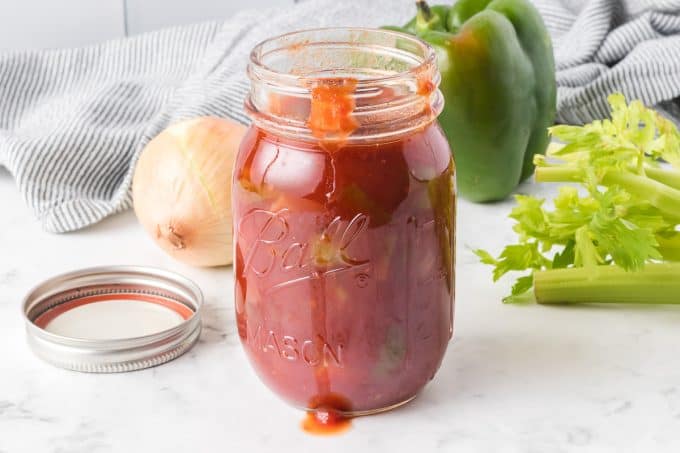
This is a tried and true grilling recipe that’s been enjoyed by our family for generations.
It’s so tasty and easy to make that you may never by store-bought barbecue sauce again!
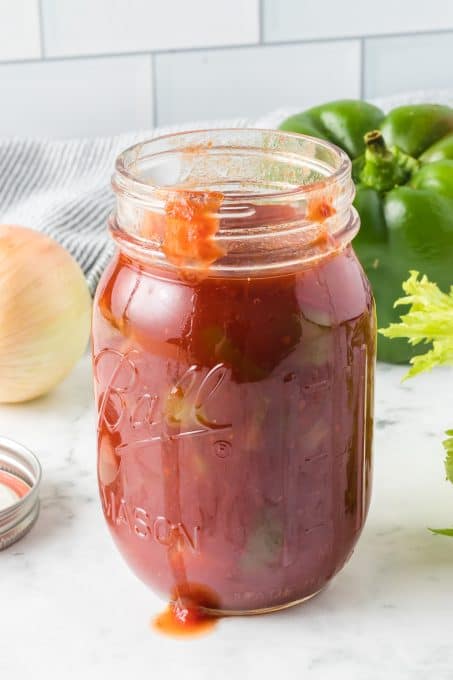
Types of Barbecue Sauce – Regional Variations and Flavor Profiles
BBQ sauce is not a one-size-fits-all condiment. There are several types, each with its own regional variations. The four main types of BBQ sauce are vinegar-based, tomato sauce-based, mustard-based, and mayonnaise-based.
Vinegar-based sauces, commonly found in the Carolinas, have a tangy and acidic flavor that pairs well with chicken and pork. Sauces with a tomato base, popular in Kansas City and Texas, are sweet, tangy, and have a slightly smoky flavor. Mustard-based sauces, a staple in South Carolina, have a tangy and slightly spicy flavor. Mayonnaise-based sauces, commonly used in Alabama, are creamy with a tangy flavor.
Which type do you think is the best barbecue sauce?
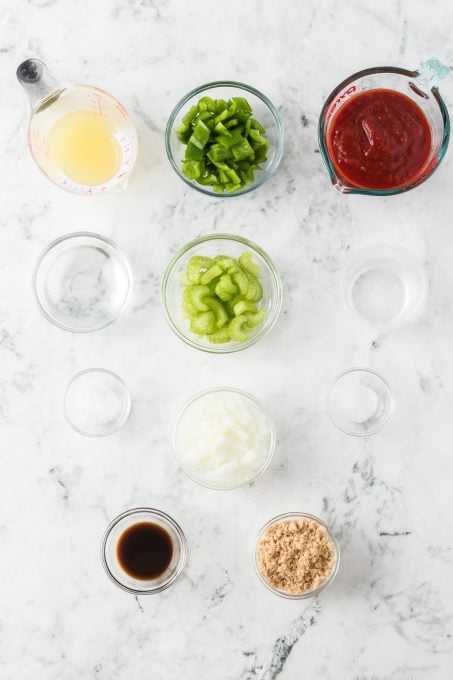
Ingredients for Homemade BBQ Sauce
Creating your own BBQ sauce requires a handful of simple ingredients that form the foundation of flavor. Here’s what you’ll need:
- ½ cup roughly chopped onion
- ½ cup roughly chopped green pepper
- ½ cup sliced celery
- 3 tablespoons lemon juice
- 3 tablespoons white vinegar (you can use apple cider vinegar too)
- 1 tablespoon Worcestershire sauce
- 3 tablespoons brown sugar
- 6 tablespoons water
- 1 cup bottled chili sauce
- 1 teaspoon Kosher salt
- ½ teaspoon Accent (MSG)- See the section below for more information on MSG.
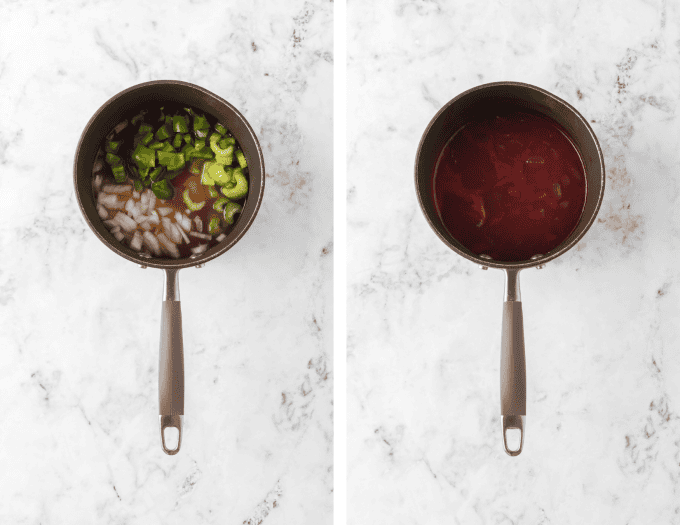
How to make BBQ Sauce
Though the list of ingredients may be a bit long, this easy recipe comes together in just a few steps! Here’s how to make your own sauce:
- In a medium saucepan, combine all the ingredients. Whisk together and bring to a simmer over medium-low heat.
- Cook until vegetables are very soft, about 40 minutes.
- Remove from heat and let the sauce cool a bit before using. Sometimes we use it with the pieces of vegetables intact, but other times I use an immersion blender to make the sauce completely smooth.
- I use one cup to generously baste my chicken with while cooking, put some of the remaining cup on again before serving, and then serve the rest alongside in bowls for dipping.
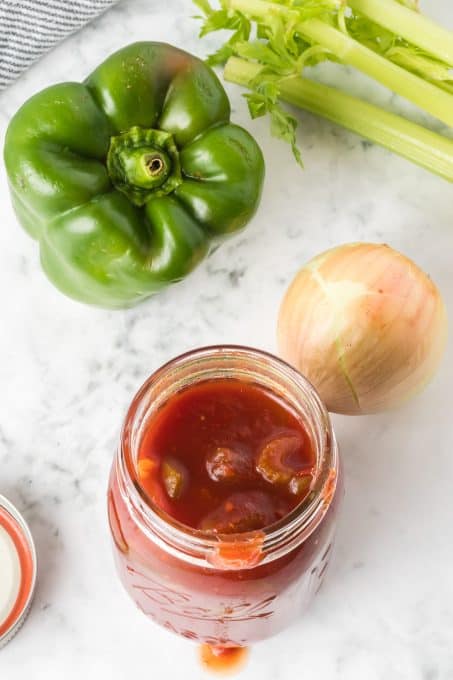
Popular Variations of Homemade BBQ Sauce
Okay, I might be biased, but I love my recipe as-is. If you want to mix it up, though, I won’t judge! Here are some ideas:
- Spicy bbq sauce: Add some heat to your sauce by incorporating cayenne pepper, hot sauce, chili powder, or red pepper flakes.
- Sweet: Swap out the brown sugar for honey or maple syrup to create a sweeter sauce.
- Smoky BBQ Sauce: Enhance the smoky flavor by adding a teaspoon or two of liquid smoke to the sauce.
- Asian-inspired: Infuse your sauce with Asian flavors by adding ginger and sesame oil.
- For a boozy twist, add a splash of bourbon to your sauce and let it simmer to mellow out the alcohol.
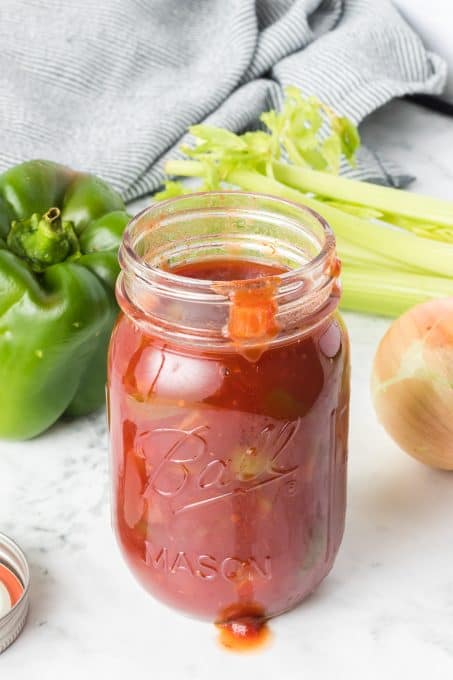
FAQs
What is Monosodium Glutamate or MSG Seasoning?
One of the ingredients in this recipe is Accent, which is a flavor enhancer known as MSG. Are you concerned about consuming MSG (monosodium glutamate)? Here’s an informative video to watch with info about it, and the foods it’s commonly found in.
And here are a few helpful facts that may ease your mind:
- Good news! There is an extensive amount of research covering MSG that has been reviewed by independent scientists and regulatory authorities throughout the world; all have found MSG to be safe.
- It occurs naturally in many foods and can also be added to foods to enhance flavor.
- The body treats glutamate in exactly the same way whether it comes from the food we eat or is added as seasoning in the form of monosodium glutamate (MSG).
- If you have health concerns about your diet, you should always discuss it with your physician!
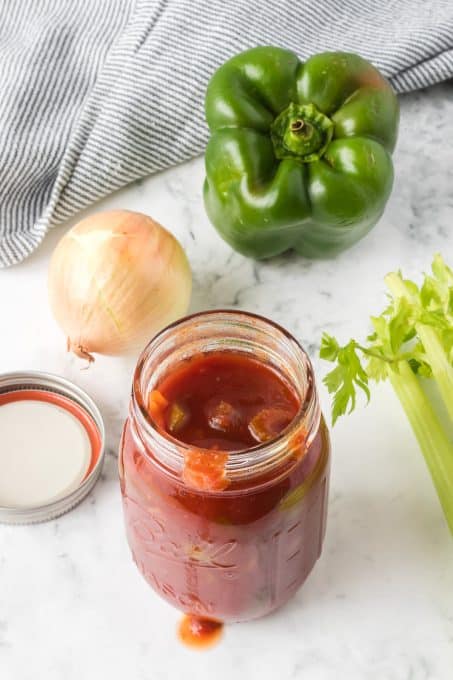
What should I pair with my Homemade Barbecue Sauce?
BBQ sauce is incredibly versatile and can be paired with a wide range of meats and dishes. Here are my favorite things to make:
- Pulled Pork: The tangy and smoky flavors of BBQ sauce complement the richness of pulled pork perfectly. Serve it on a bun or use it in my BBQ Pulled Pork Mac & Cheese.
- Grilled Chicken: Brush BBQ sauce onto grilled chicken during the final minutes of cooking for a sticky and flavorful glaze. Use it on chicken wings, chicken tenders, thighs, breasts, skewers, etc.
- Ribs: Whether you prefer baby back ribs or spare ribs, slathering them in BBQ sauce is a must. Try my recipe for Barbecued Spare Ribs
- Burgers: Take your burgers to the next level by topping them with BBQ sauce instead of ketchup. For a fun twist, try these Pork Burgers!
- Grilled Vegetables: BBQ sauce isn’t just for meat lovers. Brush it onto grilled vegetables like corn, zucchini, and bell peppers for a smoky and flavorful side dish.
- Use this tangy sauce as a dip or drizzle for french fries.
- Spread the homemade sauce on your BBQ Chicken Pizza (my fave!)
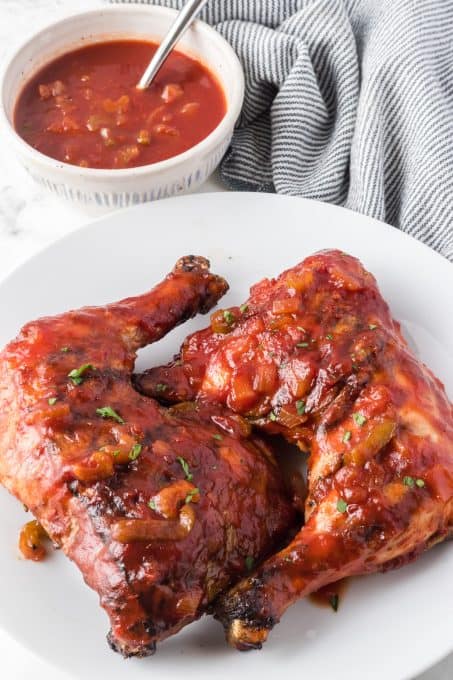
How do I store Homemade BBQ Sauce?
Store your cooled sauce in a mason jar or other airtight container. It will keep for up to two weeks in the refrigerator.
Can I freeze my barbecue sauce?
Yes, you can freeze BBQ sauce! Place it in a freezer-safe container or double up a freezer bag to avoid leakage. It will keep in the freezer for up to 3 months. Thaw overnight in the fridge when you’re ready to use it.
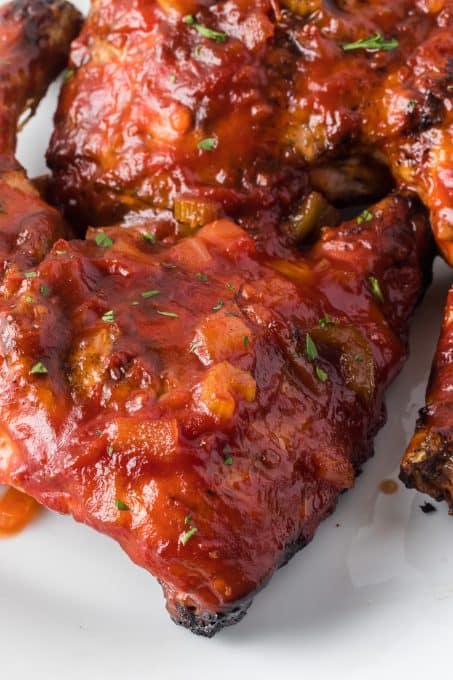
What if my sauce is too thin?
It shouldn’t be, since it will thicken a bit while it cooks, but it is a thinner sauce that ones you might buy at the store. I personally have never found this to be an issue, so haven’t ever felt the need to thicken it.
However if it’s too thin for your liking, you can thicken your sauce with a cornstarch slurry. Mix 1 tbsp of cornstarch and 2 tbsp of water. I suggest adding about half of it to the sauce towards the end of cooking instead of the full amount as I’m not sure how it will affect the outcome. Allow it to cook a bit more and if it’s still too thin add the rest, simmering a bit more before removing from the heat.
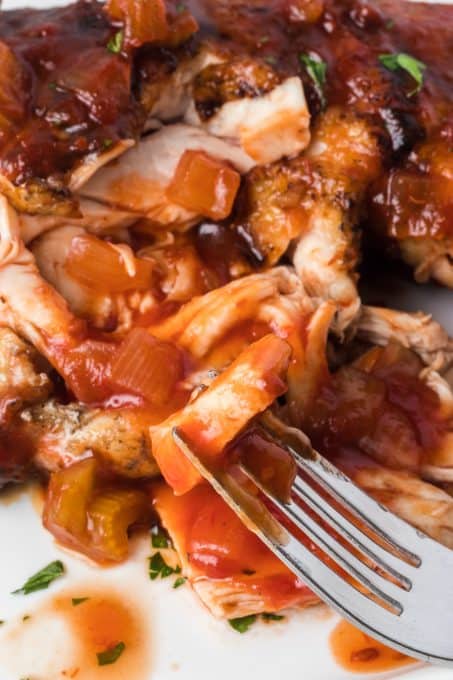
Make more Homemade Sauces
I enjoy making my own sauces whenever I can, so I know exactly what ingredients are in each one, and I can flavor it to please my taste buds. Follow these recipes to make your own sauce too:
- Made with ground beef, tomatoes, and herbs, this One-pot Spaghetti Meat Sauce recipe is perfect for everything from pasta to lasagna.
- Try this recipe for Pizza Sauce when you’re making your own homemade pizza!
- This Homemade Roasted Garlic Alfredo Sauce is creamy, garlicky, and full of cheesy Parmesan.
- This 3 Ingredient Strawberry Sauce is an easy addition to ice cream, crepes, pancakes, and more!
- If you love Greek food, you’ll enjoy this creamy Tzatziki Sauce, paired perfectly with these Turkey Gyro Pockets or anything else!

~ FOLLOW ME ~
~ FACEBOOK ~ PINTEREST ~
~ INSTAGRAM ~ TWITTER ~
~ YOUTUBE ~
Keep an eye out for more of my easy recipes each week!
Want to Save This Recipe?
Enter your email & I’ll send it to your inbox. Plus, get great new recipes from me every week!
By submitting this form, you consent to receive emails from 365 Days of Baking and More.
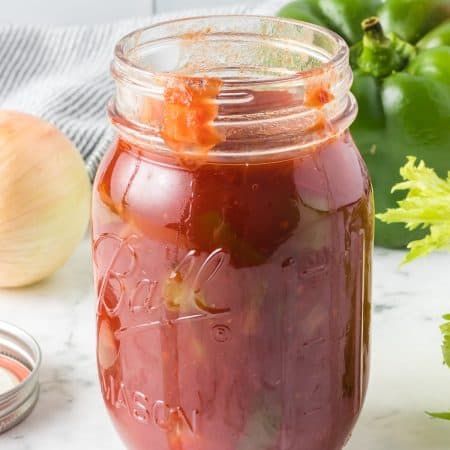
Homemade Barbecue Sauce
Ditch store-bought, and take your BBQ game to the next level with Homemade BBQ Sauce! Brown sugar, vinegar, Worcestershire, and a perfect balance of spices and veggies will impress family and friends.
Prevent your screen from going dark
Instructions
-
Combine all ingredients – the celery, green pepper, onion, chili sauce, lemon juice, water, vinegar, brown sugar, Worcestershire sauce, salt and Accent in a saucepan.
-
Cook over medium-low heat until vegetables are very soft, about 40 minutes, stirring occasionally. Sauce will thicken as it cooks.
-
Use one cup of the sauce to cook with / for basting, and reserve the remaining cup to coat the chicken, pork, etc. before serving and for dipping.
Notes
- Accent is MSG (monosodium glutamate. It is a flavor enhancer, and is used in many cuisines. You’ll find it in the spice aisle of your grocery store or here on Amazon. The U.S. Food and Drug Administration has classified MSG as a food ingredient that is generally safe, however I know that many may be opposed to consuming it. I have never used anything but Accent to make this recipe, and there is no exact substitute. When doing a search, Google tells me that soy sauce may be the best alternative. To replace the 1 teaspoon of Accent called for in the recipe, I would use just a ½ teaspoon low sodium soy sauce.
The bottle I just purchased to make this recipe expires in 5 years, so it does have a long shelf life if you’re concerned about purchasing an ingredient that will expire before you use it all.
See the heading in the post, MSG Seasoning (Monosodium Glutamate), for more about MSG as well as a link to an informative video. - The sauce can be made smooth if you allow it to cool and put it into a blender or use an immersion blender. My family prefers it with the chunks of vegetables.
- It will be a slightly thinner sauce than what you might purchase at the store, but if you’d like to thicken it, see the post for details.
- This recipe makes 2 cups of barbecue sauce and nutritional information has been calculated for 2 tablespoons per person.
- The sodium in this recipe is high because of the combination of salt and monosodium glutamate, but know that msg has ⅓ of the amount of sodium that salt does.
Nutrition
Serving: 1serving | Calories: 30kcal | Carbohydrates: 7g | Protein: 1g | Fat: 0.1g | Saturated Fat: 0.02g | Polyunsaturated Fat: 0.03g | Monounsaturated Fat: 0.01g | Sodium: 407mg | Potassium: 104mg | Fiber: 1g | Sugar: 5g | Vitamin A: 149IU | Vitamin C: 9mg | Calcium: 10mg | Iron: 0.2mg
Did you make this recipe?
Share it with me on Instagram and make sure to follow me on Pinterest for more recipes.


